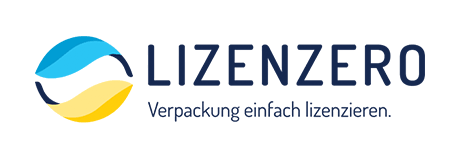Simply more than the cost – your packaging licence from 39 euros per year
As a dual system, we take care of the entire cycle of your packaging. This means that we organise the collection, sorting and recycling of your packaging. And there's even more to your licence: personal advice on all services, help with your questions, practical features, reminders for important deadlines and, above all, the promise to do more for the environment in partnership with us!
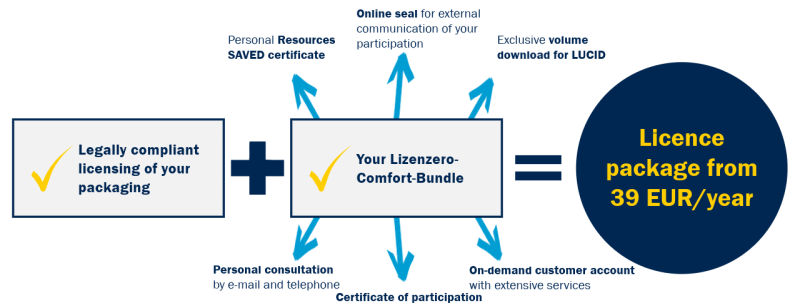
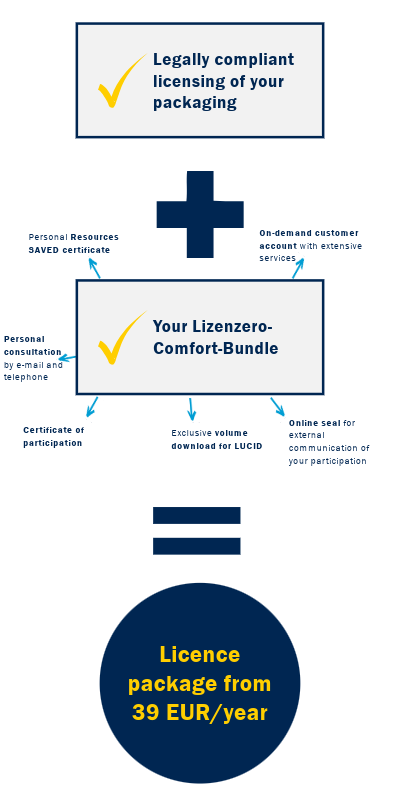
What happens to your packaging licence fees?
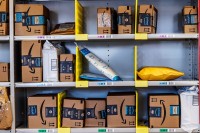
Aufbereitung der Wertstoffe zu Recyclingrohstoffen

Administrative Kosten für verschiedene Tätigkeiten, beispielsweise die Übermittlung der Verpackungsmengen an LUCID
Sammlung
der vom Endverbraucher in die Gelbe Tonne/ in den Gelben Sack entsorgten Verpackungen
Sortierung
der Wertstoffe in Sortieranlagen (inkl. Aussortierung der häufig vorkommenden Fehlwürfe der Haushalte)
Aufbereitung
der Wertstoffe zu Recyclingrohstoffen
Administrative Kosten
für verschiedene Tätigkeiten, beispielsweise Übermittlung der Verpackungsmengen an LUCID
By taking out a licence and paying your licence fee, you are participating in a dual system of your choice. In this way, you finance the disposal and recycling process of your packaging, which is collected in the yellow bin/yellow bag, paper or used glass container. This is how we enable an efficient circular economy together!
The costs include the following services that your dual system fulfils:

Collection
of packaging disposed of by end users
Sorting
of recyclables in sorting plants (incl. sorting of household waste)


Processing
of recyclable materials into recycled raw materials (e.g. recyclates)
Administrative costs
for various activities, such as the transmission of packaging quantities to LUCID

By taking out a licence and paying your licence fee, you are participating in a dual system of your choice. In this way, you finance the disposal and recycling process of your packaging, which is collected in the yellow bin/yellow bag, paper or used glass container. This is how we enable an efficient circular economy together!
The costs include the following services that your dual system fulfils:
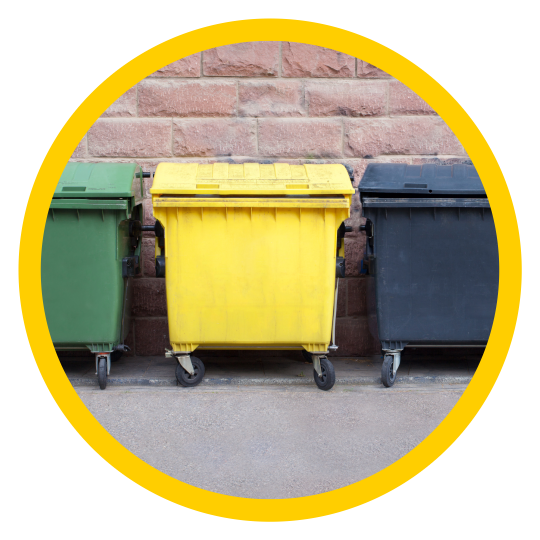
Collection
of packaging disposed of by end users
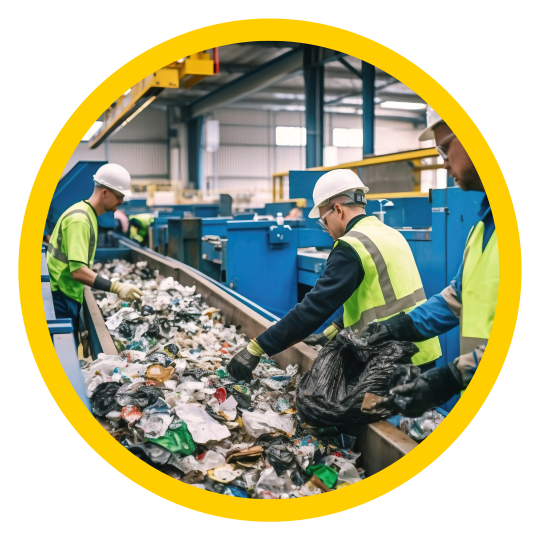
Sorting
of recyclables in sorting plants (incl. sorting of household waste)
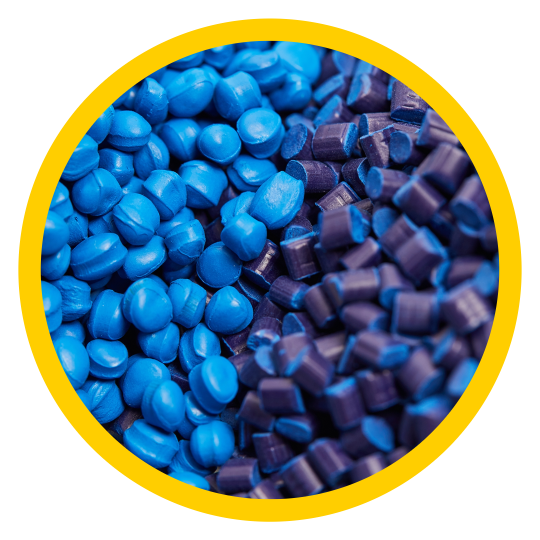
Processing
of recyclable materials into recycled raw materials (e.g. recyclates)

Administrative costs
for various activities, such as the transmission of packaging quantities to LUCID
What's behind the packaging licence fees
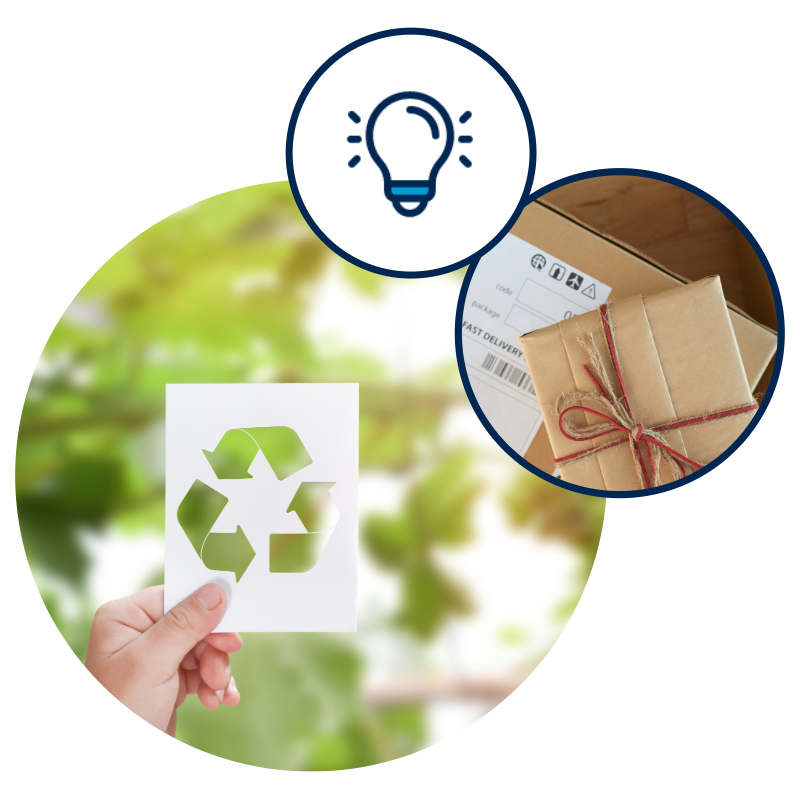
According to the German Packaging Act (VerpackG), you are obliged to licence your sales packaging with a dual system, register in the LUCID packaging register of the Central Agency Packaging Register (ZSVR) and regularly report your data there. Why is this necessary? As a distributor of packaging that ends up at the end consumer's home, you are responsible for the recycling of this packaging.
And since it is difficult for you to collect, sort and recycle all packaging yourself after your customers have disposed of it, there are dual systems. We are one of them – and we take care of the entire recycling process for your packaging with our own sorting and recycling facilities. By fulfilling your obligation to participate in a dual system (packaging licensing), you transfer your tasks to this system, for example to us.
You pay for all the recycling steps so that new packaging can be created from old ones. The costs depend on the quantity of your packaging and the type of packaging materials. At Lizenzero, you can license your packaging for as little as €39 per year.
Note: There is no obligation to participate in the dual system for transport packaging (= packaging for the transport of goods between trading partners in the B2B sector). The take-back and recycling of this packaging is subject to the provisions of §15 VerpackG. Interzero offers take-back and recycling solutions for transport packaging; find out more here: Recycling of transport packaging via Interzero.
How to find your dual system
The various system providers can set their prices and services individually. At Lizenzero, for example, we prioritise providing great service – because we know that even more bureaucracy will only slow you down in your day-to-day business. This reduces the acceptance of the measures and is not in the interests of the environment. That's why we provide support wherever we can! What all dual systems have in common, however, is that they take over the collection, sorting and processing of your licensed packaging. But not all of them, like us, also operate their own sorting, recycling and research facilities and can therefore effectively drive recycling forward.
Would you like a little more history of the dual systems? Your obligations to participate in a dual system and to pay licence fees have been defined since the German Packaging Ordinance.
In the early years of the Dual System, there was only one provider, the Green Dot. The monopoly held by the Green Dot - Duales System Deutschland GmbH (DSD) - was, however, ended by the EU Commission. There are now a number of companies that offer to licence packaging. These companies organised in the Dual System are in turn referred to as 'dual systems'. There are currently eleven of these in Germany. The dual system Interzero Recycling Alliance, to which Lizenzero belongs, is one of them. You are free to choose which company you conclude your licence agreement with.
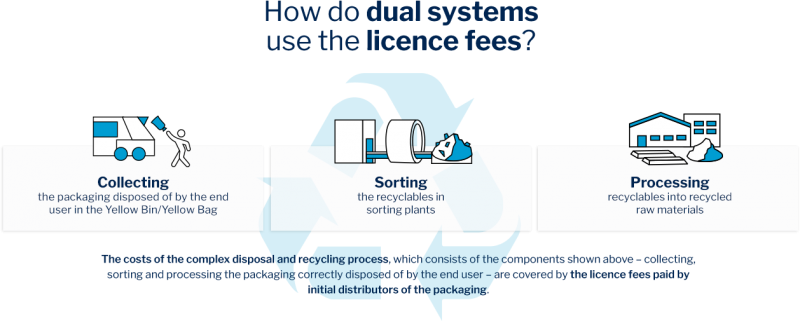
What our customers say
Packaging licence fees calculated quickly
Choose your packaging type:
-
Resources saved:
Resources saved
(Source: Fraunhofer UMSICHT)Here you can see how many kilograms of primary raw materials you save with your packaging licensing and its associated recycling. To clearly illustrate the volume saved, we also use a diagram containing the corresponding number of apples.
The calculated values are based on an annual study from the prestigious Fraunhofer Institute for Environmental, Safety and Energy Technology (UMSICHT).
We state the volume of primary raw materials saved and greenhouse gas emissions reduced by your company’s partnership with Interseroh on your personal resource protection certificate.
- 0 kg
- ≈ 0
Box S
Box S
Our reference box has the following specification:
Dimensions: 25,0 x 17,5 x 10,0 cm
Weight: Paper/paperboard/cardboard 65 g
Example: DHL Package S
Box S
incl. packing tape
Box S - incl. packing tape
Our reference box has the following specification:
Dimensions: 25,0 x 17,5 x 10,0 cm
Weight: Paper/paperboard/cardboard 65 g, plastic 2 g
Example: DHL Package S wrapped with PVC packing tape
Box S
incl. packing tape and paper filling material
Box S - incl. packing tape and paper filling material
Our reference box has the following specification:
Dimensions: 25,0 x 17,5 x 10,0 cm
Weight: paper/paperboard/cardboard 70 g, plastic 2 g
Example: DHL Package S wrapped with PVC packing tape + Kraft paper or wood wool
Box S
incl. packing tape and synthetic filling material
Box S - incl. packing tape and synthetic filling material
Our reference box has the following specification:
Dimensions: 25,0 x 17,5 x 10,0 cm
Weight: paper/paperboard/cardboard 65 g, plastic 12 g
Example: DHL Package S wrapped with PVC packing tape + bubble wrap with small bubbles
Air Cushion Envelope S
made of paper
Air bubble envelope S - made from paper
Our reference envelope has the following specification:
Dimensions: 180 x 265 mm
Weight: paper/paperboard/cardboard 15 g, plastic 2 g
Example: Padded paper envelope, DIN B5 format, lined inside with bubble wrap, size D4
Box M
Box M
Our reference box has the following specification:
Dimensions: 37,5 x 30,0 x 13,5 cm
Weight: paper/paperboard/cardboard 275g
Example: DHL Package M
Box M
incl. packing tape
Box M - incl. packing tape
Our reference box has the following specification:
Dimensions: 37,5 x 30,0 x 13,5 cm
Weight: paper/paperboard/cardboard 4 g
Example: DHL Package S wrapped with PVC packing tape
Box M
incl. packing tape and paper filling material
Box M - incl. packing tape and paper filling material
Our reference box has the following specification:
Dimensions: 37,5 x 30,0 x 13,5 cm
Weight: paper/paperboard/cardboard 300 g, plastic 4 g
Example: DHL Package M wrapped with PVC packing tape + kraft paper or wood wool
Box M
incl. packing tape and synthetic filling material
Box M - incl. packing tape and synthetic filling material
Our reference box has the following specification:
Dimensions: 37,5 x 30,0 x 13,5 cm
Weight: paper/paperboard/card 275 g, plastic 24 g
Example: DHL Package M wrapped with PVC packing tape+ bubble wrap with small bubbles
Air bubble envelope M
made of paper
Air bubble envelope M - made from paper
Our reference envelope has the following specification:
Dimensions: 220 x 340 mm
Weight: paper/paperboard/cardboard 22 g, plastic 3 g
Example: Padded paper envelope, DIN A4 format, lined inside with bubble wrap, size F6
Box L
Box L
Our reference box has the following specification:
Dimensions: 45,0 x 35,0 x 20,0 cm
Weight: paper/paperboard/cardboard 400 g
Example: DHL Package L
Box L
incl. packing tape
Container L - incl. packing tape
Our reference box has the following specification:
Dimensions: 45,0 x 35,0 x 20,0 cm
Weight: paper/paperboard/cardboard 400 g, plastic 6 g
Example: DHL Package L wrapped with PVC packing tape
Box L
incl. packing tape and paper filling material
Box L - incl. packing tape and paper filling material
Our reference box has the following specification:
Dimensions: 45,0 x 35,0 x 20,0 cm
Weight: paper/paperboard/cardboard 500 g, plastic 6 g
Example: DHL Package L wrapped with PVC packing tape + bubble wrap with small bubbles
Box L
incl. packing tape and synthetic filling material
Box L - incl. packing tape and synthetic filling material
Our reference box has the following specification:
Dimensions: 45,0 x 35,0 x 20,0 cm
Weight: paper/paperboard/cardboard 400 g, plastic 36 g
Example: DHL Package L wrapped with PVC packing tape + bubble wrap with small bubbles
Air Cushion Envelope L
made of paper
Air bubble envelope L - made from paper
Our reference envelope has the following specification:
Dimensions: 300 x 445 mm
Weight: paper/paperboard/cardboard 40 g, plastic 5 g
Example: Padded paper envelope, DIN A3 format, size I9
-
Resources saved:
Resources saved
(Source: Fraunhofer UMSICHT)Here you can see how many kilograms of primary raw materials you save with your packaging licensing and its associated recycling. To clearly illustrate the volume saved, we also use a diagram containing the corresponding number of apples.
The calculated values are based on an annual study from the prestigious Fraunhofer Institute for Environmental, Safety and Energy Technology (UMSICHT).
We state the volume of primary raw materials saved and greenhouse gas emissions reduced by your company’s partnership with Interseroh on your personal resource protection certificate.
- 0 kg
- ≈ 0
Shipping envelope S
without filling material
Shipping envelope S - without filling material
Our reference shipping envelope has the following specification:
Dimensions: 165 x 220 mm
Weight: plastic 10 g
Example: Plastic shipping bag for textile and courier shipping
Packaging cup S
Packaging cup S
Our reference packaging cup has the following specification:
Dimensions: Ø 15,5 cm x 6,8 cm (Capacity 500 ml)
Weight: plastic 19,4 g
Example: Salad bowls with hinged lid. Made of PET
Film S
Film S
Our reference film has the following specification:
Dimensions: 30 x 100 cm
Weight: Plastic 22 g
Example: Blown film or bubble wrap with large bubbles
Shipping envelope M
without filling material
Shipping envelope M - without filling material
Our reference shipping envelope has the following specification:
Dimensions: 245 x 320 mm
Weight: plastic 12 g
Example: Plastic shipping bag for textile and courier shipping
Packaging cup M
Packaging cup M
Our reference packaging cup has the following specification:
Dimensions: Ø 17,6 cm x 7,5 cm (Capacity 750 ml)
Weight: plastic 24,6 g
Example: Salad bowls with hinged lid. Made of PET
Film M
Film M
Our reference film has the following specification:
Dimensions: 60 x 200 cm
Weight: Plastic 45 g
Example: Blown film or bubble wrap with large bubbles
Shipping envelope L
without filling material
Shipping envelope L - without filling material
Our reference shipping envelope has the following specification:
Dimensions: 400 x 500 mm
Weight: plastic 15 g
Example: Plastic shipping bag for textile and courier shipping
Packaging cup L
Packaging cup L
Our reference packaging cup has the following specification:
Dimensions: Ø 18,9 cm x 8 cm (Capacity 1000 ml)
Weight: plastic 27,1 g
Example: Salad bowl with hinged lid. Made of PET
Film L
Film L
Our reference film has the following specification:
Dimensions: 120 x 200 cm
Weight: Plastic 90 g
Example: Blown film or bubble wrap with large bubbles
-
Resources saved:
Resources saved
(Source: Fraunhofer UMSICHT)Here you can see how many kilograms of primary raw materials you save with your packaging licensing and its associated recycling. To clearly illustrate the volume saved, we also use a diagram containing the corresponding number of apples.
The calculated values are based on an annual study from the prestigious Fraunhofer Institute for Environmental, Safety and Energy Technology (UMSICHT).
We state the volume of primary raw materials saved and greenhouse gas emissions reduced by your company’s partnership with Interseroh on your personal resource protection certificate.
- 0 kg
- ≈ 0
Bottle / jar S
with lid (plastic)
Bottle / jar S with lid – plastic
Our reference bottle/jar has the following specification:
Dimensions: Capacity 250 ml
Weight: glass 150 g, plastic 1 g
Example: Bottle with plastic lid
Bottle / jar S
with lid (aluminium)
Bottle / jar S with lid (aluminium)
Our reference bottle/jar has the following specification:
Dimensions: Capacity 250 ml
Weight: gass 150 g, aluminium 1 g
Example: Bottle with aluminium lid / cork stopper
Bottle / jar S
with lid (cork)
Bottle / jar S with lid (cork)
Our reference bottle/jar has the following specification:
Dimensions: Capacity 250 ml
Weight: glass 150 g, Other materials 1 g
Example: Bottle with cork stopper
Bottle / jar M
with lid (plastic)
Bottle / jar M with lid – plastic
Our reference bottle/jar has the following specification:
Dimensions: Capacity 750 ml
Weight: glass 500 g, plastic 1 g
Example: Bottle with plastic lid
Bottle / jar M
with lid (aluminium)
Bottle / jar M with lid (aluminium)
Our reference bottle/jar has the following specification:
Dimensions: Capacity 750 ml
Weight: glass 500 g, aluminium 1 g
Example: Bottle with aluminium lid
Bottle / jar M
with lid (cork)
Bottle / jar M with lid (cork)
Our reference bottle/jar has the following specification:
Dimensions: Capacity 750 ml
Weight: glass 500 g, other materials 1 g
Example: Bottle with cork stopper
Bottle / jar L
with lid (plastic)
Bottle / jar L with lid – plastic
Our reference bottle/jar has the following specification:
Dimensions: Capacity 1 l
Weight: glass750 g, plastic1 g
Example: Bottle with plastic lid
Bottle / jar L
with lid (aluminium)
Bottle / jar S with lid (aluminium)
Our reference bottle/jar has the following specification:
Dimensions: Capacity 1 l
Weight: glass 750 g, aluminium 1 g
Example: Bottle with aluminium lid
Bottle / jar L
with lid (cork)
Bottle/jar L with lid - Kork
Our reference bottle/jar has the following specification:
Dimensions: Capacity 1 l
Weight: Glass 750 g, Other materials 1 g
Example: Bottle with cork stopper
Paper, cardboard 0,000 kg
Plastics 0,000 kg
Glass 0,000 kg
Your license package:
Your annual licence contract includes the VerpackG-compliant licensing of the entered packaging quantities, the online seal as proof of your system participation, your annual Resources SAVED certificate and a service flat rate. To ensure that you are permanently legally compliant and do not have to worry about this every year, the contract is extended at the beginning of each year. You can cancel the contract yourself in your customer account up to 3 months before the end of each year.
25,00 € plus VAT
Your packaging licence fee depends on the amount of packaging you put into circulation each year and the respective packaging materials (so-called fractions). The total weight per packaging material in kilograms is decisive.
You can easily calculate the weight in kilograms with our Lizenzero calculation tool. After entering your data, our calculator will show you transparently how high your licence fee will be. To pay the fee, you can then choose from various payment methods such as PayPal, credit card, invoice or Klarna to conclude the contract.
This is how it works:
- Under the standard packaging types for each material, enter the volumes you are using.
- Then simply click on "CALCULATE YOUR LICENSE VOLUMES NOW" to calculate your packaging licence costs.

Note: After concluding your licence agreement, you still need to register with the ZSVR's LUCID packaging register and report your volumes and the name of your dual system there too. LUCID does not charge any additional costs for this.
